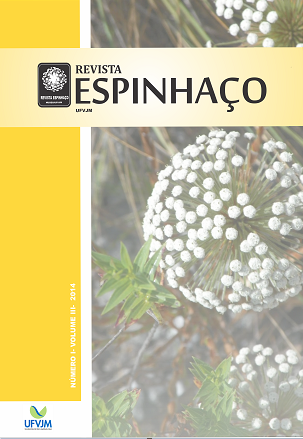The Rio and the towns: an exploratory analysis of dependencies and scopes of communities Arapiuns (Pará, Brazil) and the formation of urban Amazon
DOI:
https://doi.org/10.5281/zenodo.3966397Keywords:
Amazônia, riverine community, urbanization, Arapiuns, simple regression, cluster analysisAbstract
Riverine communities are here considered as socio-spatial units that structure urban phenomenon at the local scale. This paper presents an analysis of the field data obtained for the communities along the Arapiuns, Maró and Aruã rivers, in Southwestern Pará. Semistructured questionnaires were applied in 49 communities providing 32 variables and were used to compose five indicators which describe conditions of infrastructure, health and education, presence of the state, land use and community organization. Statistical techniques of simple regression and cluster analysis were applied to investigate the dependence of the communities’ conditions to urban centers, and the existence of similar situations to discriminate community groups. The river distance from Santarem did not explain the variability in the community indicators, however it showed to be related to land use and the presence of the state indicators. The organization of communities explained in part the indicators of health,education and infrastructure. From cluster analysis, three groups of communities were identified, highlighting the variability of their conditions. The indicators of health and education and community organization were key attributes to differentiate these groups. This initial characterization of Arapiuns communities investigated the spatial distribution of the local living conditions and the possibility of identifying communities groups with similar conditions. This analysis contributes to understand the structure and organization of the Amazon territory, providing valuable information for local public policies.
References
AMARAL, S. et. al. Comunidades ribeirinhas como forma sócio-espacial de expressão urbana na Amazônia: uma tipologia para a região do Baixo Tapajós (Pará-Brazil). REBEP, 2013.
BECKER, B. K. Undoing Myths: The Amazon - An Urbanized forest. In: CLÜSENER, G. M.; SACHS, I. (Ed.). Brazilian Perspectives on sustainable development of the Amazon region - Man and Biosphere Series. v. 15. Paris: UNESCO and Parthenon Publish Group Limited, p. 53-89. 1995.
BECKER, B. K. Geopolítica da Amazônia. Estudos Avançados, v. 19, n. 53, p. 71-86, 2005.
BECKER, B. K. A Urbe Amazônida: entre a floresta e a cidade. Rio de Janeiro: Garamond, 2013.
CARDOSO, A. C. D.; LIMA, J. J. F. Tipologias e padrões de ocupação urbana na Amazônia Oriental: para que e para quem? In: CARDOSO, A. C. D. (Ed.). O Rural e o Urbano na Amazônia. Diferentes olhares e perspectivas. Belém-PA: EDUFPA, p. 55-98, 2006.
ESCADA, M. I. S. et al. Estrutura, serviços e conectividade das comunidades ribeirinhas do Arapiuns, PA. Pesquisa de Campo Jun de 2012. Relatório Técnico de atividade de pesquisa do INPE. São José dos Campos: INPE, 2013.
GARCIA, R. A.; SOARES-FILHO, B. S.; SAWYER, D. O. Socioeconomic dimensions, migration, and deforestation: An integrated model of territorial organization for the Brazilian Amazon. Ecological Indicators, v. 7, n. 3, p.719–730, 2007.
GUEDES, G. R.; COSTA, S.; BRONDIZIO, E. Revisiting the Urban Hierarchy Approach in the Brazilian Amazon: A Multilevel Model Using Multivariate Fuzzy Cluster Methodology. Population and Environment, v. 30, p. 159–192, 2009.
IBGE. Censo Agropecuário 2006. Rio de Janeiro: Instituto Brasileiro de Geografia e Estatística, 2006. Disponível em:
<http://www.ibge.gov.br/home/estatistica/economia/ag ropecuaria/censoagro/default.shtm> Acesso em dezembro de 2013.
IBGE. REGIC - Regiões de Influência das Cidades. Rio de Janeiro: IBGE, 2008. Disponível em: <http://www.ibge.gov.br/home/geociencias/geografia/r egic.shtm.> Acesso em dezembro de 2013
MARQUES, M. I. M. O conceito de espaço rural em questão. Terra Livre, v. 18, n. 19, p. 95-112, 2002.
MONTE-MÓR, R. L. D. M. Urbanização Extensiva e Lógicas de Povoamento: Um Olhar Ambiental. In: Santos, M.; Souza, M. A. A.; Silveira, M. L. (Ed.). Território, Globalização e Fragmentação. São Paulo: HUCITEC-ANPUR, p. 169-181, 1994.
PARRY, L.; DAY, B.; AMARAL, S.; PERES, C. A. Drivers of rural exodus from Amazonian headwaters. Population and Environment, v. 32, n. 2-3, p. 137- 176, 2010.
OLIVEIRA A. M.; SCORH, T. As redes urbanas na Amazônia: as cidades como o começo e fim. Revista geográfica de América Central, v. 1, n. 1, p. 1-16, 2011.
PINHO, C. M. D. Análise das redes de localidades ribeirinhas Amazônicas no tecido urbano estendido: uma contribuição metodológica. 2012. Tese (Doutorado em Sensoriamento Remoto) - Instituto Nacional de Pesquisas Espaciais, São José dos Campos, 2012. Disponível em: <http://urlib.net/8JMKD3MGP7W/3BNMFS8>. Acesso em agosto de 2013.
SATLHER, D. Urban hierarchy in the brazilian Amazon. REBEP, v. 27, n. 2, p. 251-268, 2010.
TRINDADE JÚNIOR, S. C. et. al. Espacialidades e temporalidades urbanas na Amazônia ribeirinha: mudanças e permanências a jusante do Rio Tocantins. ACTA Geográfica, Ed. Esp. Cidades na Amazônia Brasileira, p. 117-133, 2011.
Downloads
Published
How to Cite
Issue
Section
License
Copyright (c) 2022 Revista Espinhaço

This work is licensed under a Creative Commons Attribution-NonCommercial-NoDerivatives 4.0 International License.


